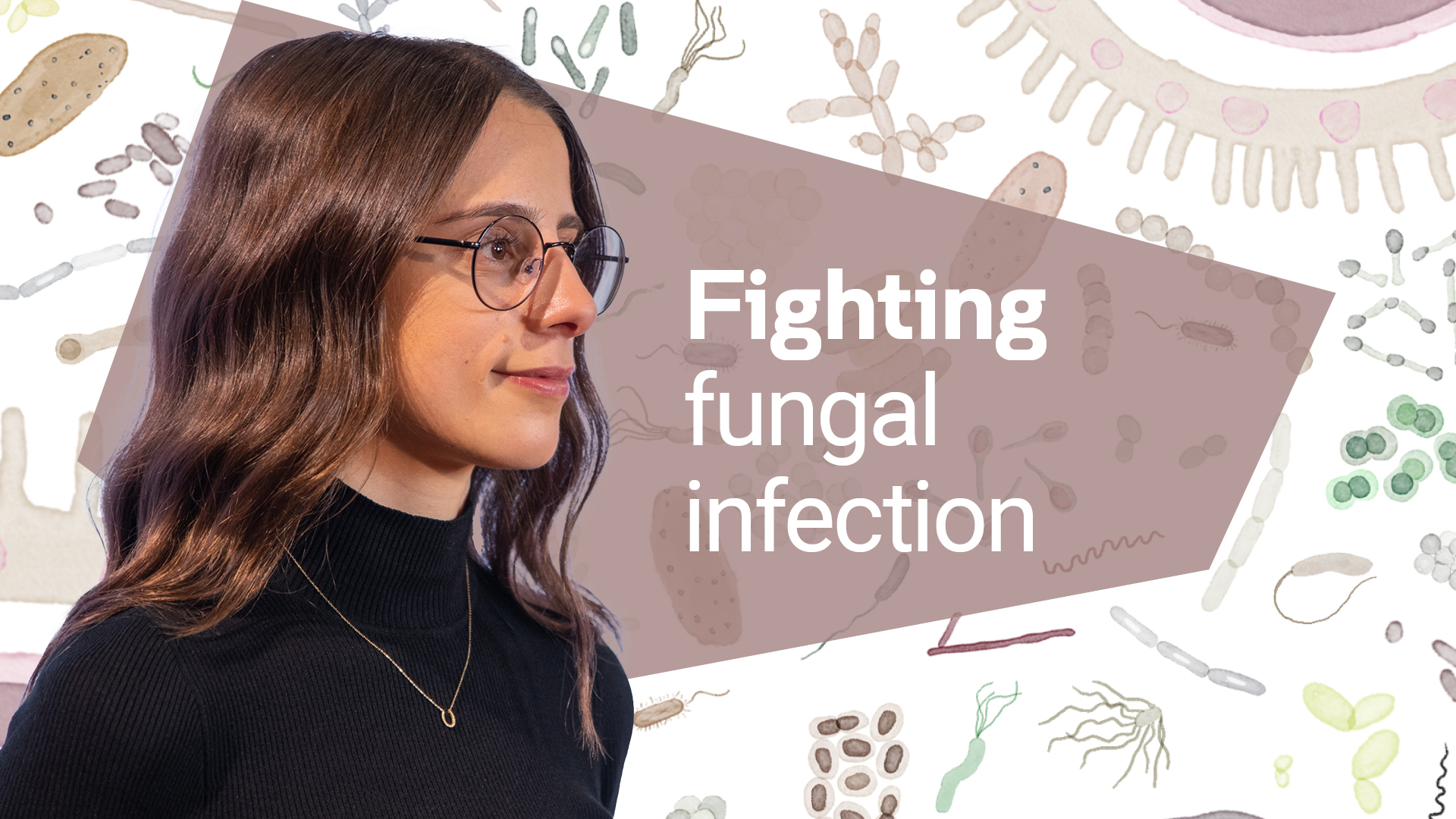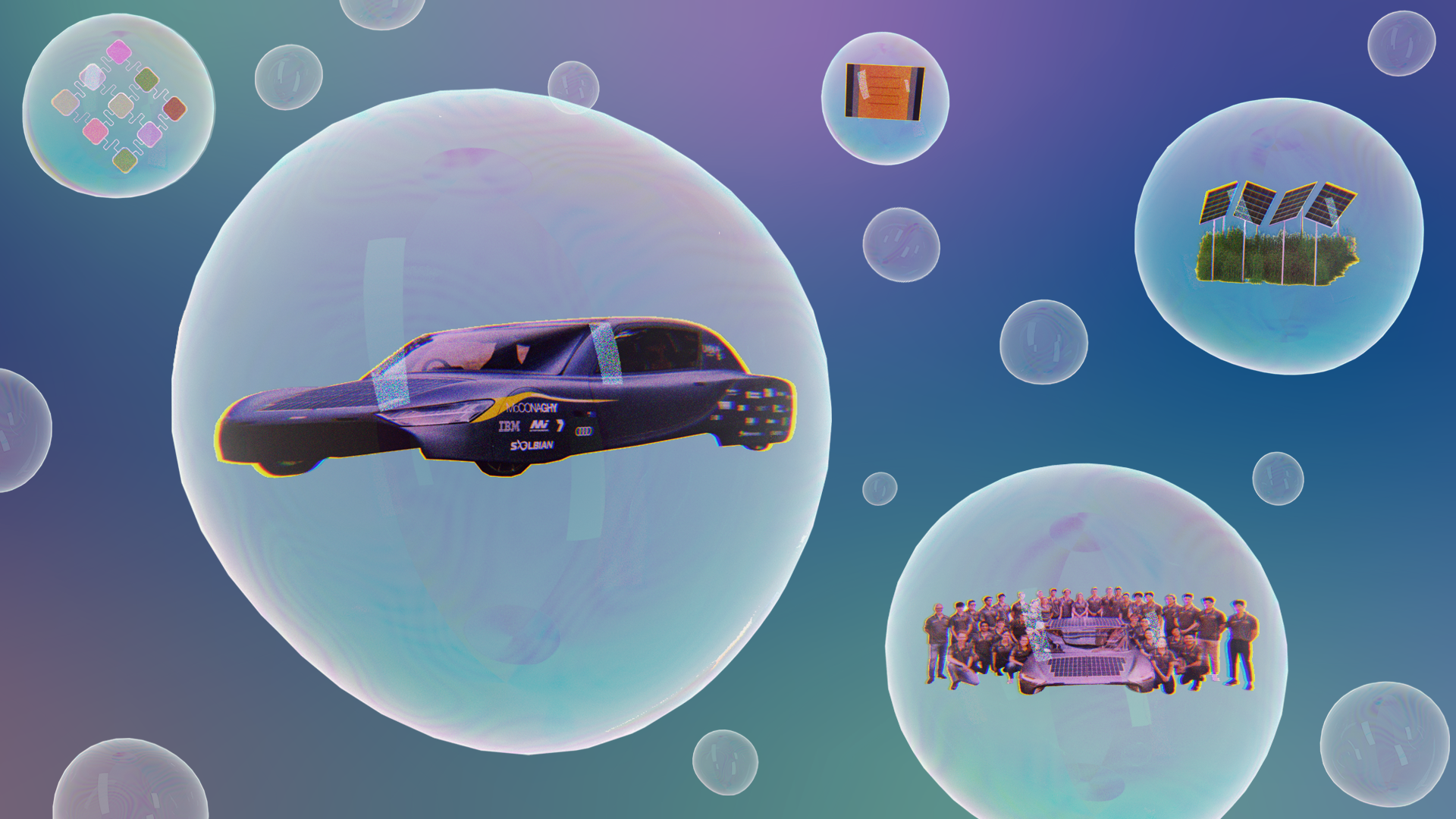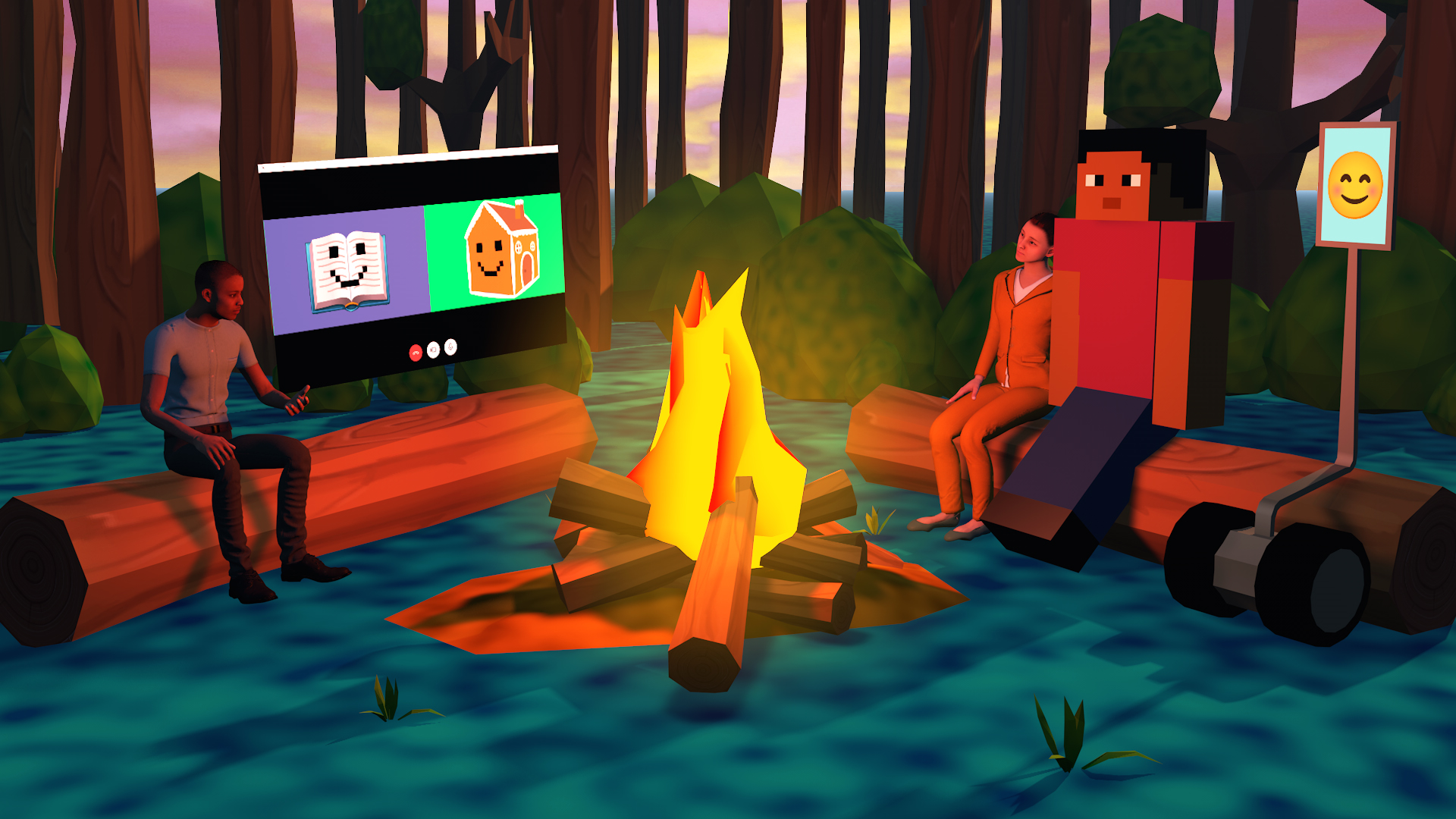Bianca Briscas | The secret to fighting fungal infection
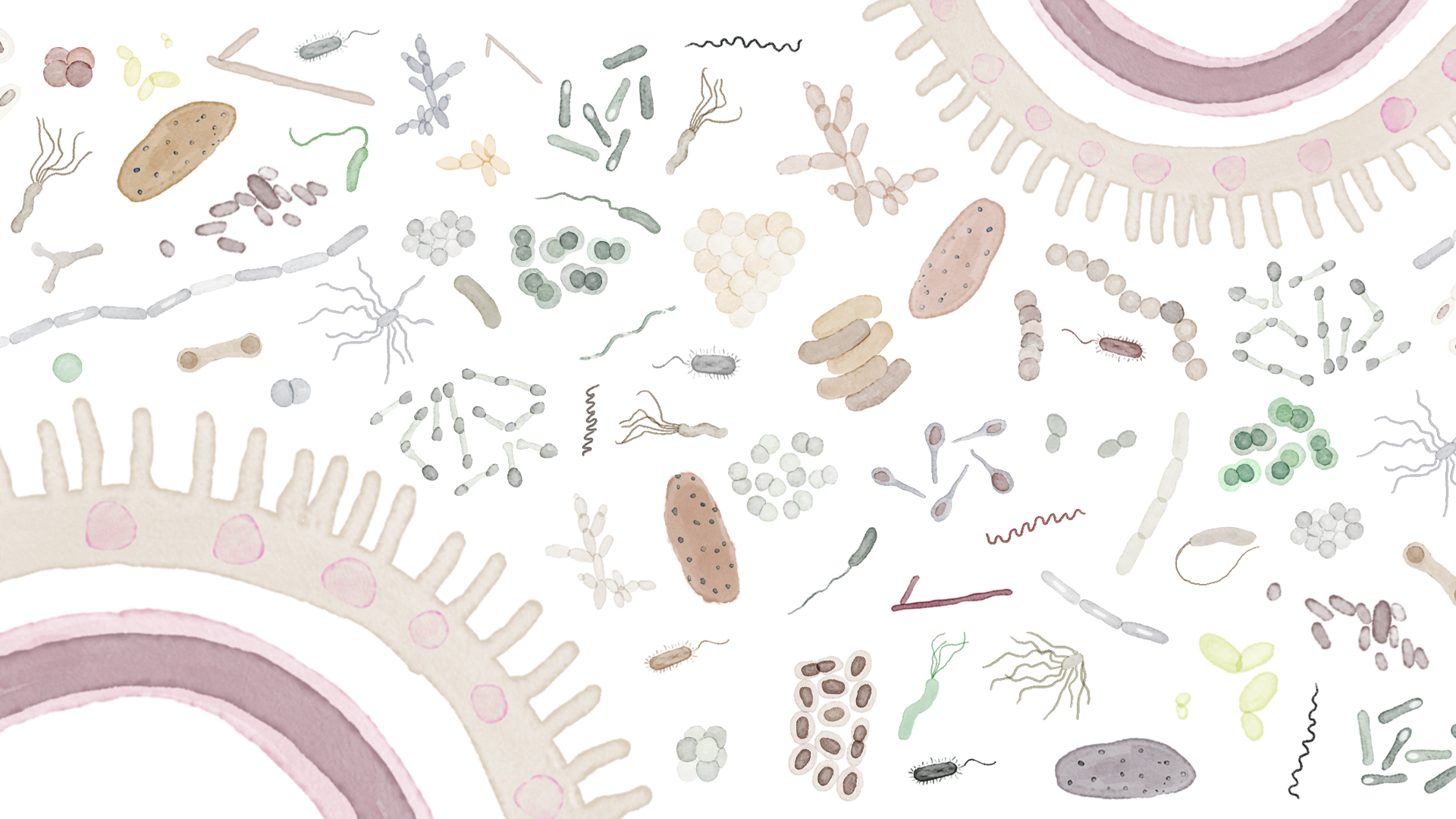
Fungal infections kill three times as many people as malaria every single year.
Nearly 400 years ago, scientists made the groundbreaking discovery that fungi were all around us, on us, and inside us too. The development of germ theory – the understanding that microbes like bacteria, viruses, and fungi are responsible for infectious diseases – has since revolutionised almost every aspect of human behaviour. But when it comes to treating infections caused by fungi, we haven’t actually made a whole lot of progress. Even with the handful of anti-fungal drugs we have developed, nearly 50% of all people who develop a systemic fungal infection will die. So why is our current arsenal against fungal infection so limited? And how might we better arm ourselves in the war against fungus?
Transcript
Ann Mossop: In a world of global pandemics, climate emergencies, and ever-increasing costs of living, it's understandable that we might feel fearful about what the future holds. But as we make our way through the 21st century, there are, in fact, many new and exciting discoveries which can improve our lives. I'm Ann Mossop, director of the UNSW Centre for Ideas. Welcome to What comes next? From the potential healing powers of magic mushrooms in mental health, to how x-ray vision might help us transition to a renewable economy. In this 10-part series, we'll hear from UNSW Sydney’s brightest minds, unpacking some of the big ideas, which are integral to our 21st century challenges.
Nearly 400 years ago, scientists made the groundbreaking discovery that fungi were all around us, on us and inside us too. And yet today, nearly 50% of all people who develop a systemic fungal infection will die. UNSW Sydney PhD candidate Bianca Briscas asks; why is our current arsenal against fungal infection so limited?
Bianca Briscas: When I ask you to picture fungi, what's the first thing that you see? Probably mushrooms, sitting in the produce aisle of the grocery store or crinkling inside a brown paper bag. The chewy stringy stuff that you get in really good ramen? Well, maybe you see those lawn mushrooms that sometimes pop up in the grass after lots of rain? Maybe you get a glimpse of a mould that's grown on these veggies you swore that you were going to cook dinner with two, no, three weeks ago? Or do you think of the really gross stuff? A crusty yellow toenail? A flaky chunk of skin? White circles coating someone's tongue? Oh, yuck. Sorry. Even still, I bet none of you pictured fungi living in your own intestines. And look, I can't really blame you. It's only been 400 years since we realized that there are teeny tiny things growing everywhere you could possibly imagine. The development of germ theory, the understanding that microbes like bacteria, viruses and fungi are responsible for infectious disease, revolutionized almost every aspect of human behavior. And it also kickstarted the longest running war in human history. For a while, we didn't even know we were fighting this war. In fact, if the existence of the Earth was condensed to just 24 hours, microbes have been battling it out from about 4am and humans have just shown up with less than two minutes to midnight. To say we're late to the party is an understatement. And look, we've done our best to get involved. But there's only so much we can do as late comers to a 4-billion-year-old war.
At first, we blame disease on anything that we could think of, from the wrath of various vengeful deities, to a misalignment of the planets, to breathing in bad air. Eventually though, after some guy mucking around with a glorified magnifying glass discovered microorganisms, humanity caught on and we started to fight back. Now don't get me wrong, germ theory wasn't exactly embraced by the medical and scientific community at the time, or, as the last few years have shown us, by the general public either. Who would have thought actually having a bath more than once a year, and maybe washing the scalpel before you remove someone's appendix, could make such a huge difference? In between all these minor changes, wash your hands, wear a mask, get a vaccine, you know the drill, a much larger goal emerged. Scientists, doctors and naturopaths alike began the search for a so-called ‘Magic Bullet’, a perfectly targeted treatment designed to selectively kill disease causing microbes without causing any damage to the human body. Most people tend to forget that the first antibiotic designed to kill bacteria originally came from a fungus. Millions of years of evolutionary battle between microbes had given us an ideal solution. So when penicillin was discovered, isolated and purified, its use became widespread to treat diseases caused by bacteria. This was the golden age of antibiotics, and now we've got nearly 200 Different antibacterial drugs at our disposal.
Fungi, however, put up a bit more of a fight. It took almost 30 years longer than it did for bacteria, but eventually we developed the first antifungal drug. Unfortunately, we haven't actually made a whole lot of progress since then. We're still waiting for the golden age of antifungals. Quite literally, I can count on one hand the different types of antifungal drugs that are currently on the market. It's five. So why is developing antifungal drugs such a challenge? Well, because fungal cells are so similar to human cells, anything that's toxic to fungi is likely to be toxic to humans too. Drug development is incredibly expensive and time consuming, and resistance to antimicrobial drugs complicates things even further. We might have won the battle, but we are definitely losing the war.
When it comes to this war between microbes and humans, most people don't even see fungi as a threat. But fungal infections kill nearly 1.7 million people every single year. That's nearly 5000 deaths a week. One of the leading causes of fungal infection is Candida albicans. You've never heard of it. I know. Or if you have, you're thinking of skin rashes and yeast infections. But it couldn't happen to you, right? I mean, fungal infections are, like, rare and gross, right? Well, I've got good news and bad news. The bad news is that at least 60% of you have this fungus living in your gut right now. And you can't get rid of it either. It's not found in the environment, or in animals. It's evolved alongside the host, that's us, and has adapted to survive in almost every niche and crevice of your body that you can think of. In healthy people, this fungus doesn't cause any harm. It has to compete with all the other microbes in your gut, it’s blocked off from your bloodstream and other organs by the lining of your gut. And if it does, somehow manage to escape, it's quickly dealt with by your immune system. However, if something changes in this complex balance, like all the healthy bacteria disappeared, because you've taken antibiotics, your gut lining gets damaged because of surgery or illness. And your immune system decides to pack up and go on holiday. Candida albicans can become a serious problem. It can overgrow, escape the gut and hit you right in your bloodstream. Two major organs like the liver, spleen, and kidneys. Eventually, this can kill you. And in most cases, these infections are caused by the candidate albicans already living inside your gut.
Now look, I'm not trying to scare you, I promise. This is the good news. These infections only affect people who are already seriously ill and immunocompromised. Candida albicans isn't out to get you. It only causes disease if and when it is given the opportunity. That doesn't mean you shouldn't take it seriously though. Remember, there's five classes of antifungal drug? Well, only three of them can be used to treat infections caused by Candida albicans. And even though we give patients antifungal drugs, nearly 50% of people who get these systemic infections still die. Like I said, we might have won the battle, but we are definitely losing the war. So, what can we do? Clearly, drug development isn't the answer. It's difficult, expensive, and takes way too long. And even if we do somehow manage to make a new one, at best, it's another band aid solution.
Over and over again, we've tried the same thing, and it simply isn't working. So, is there another way to think about fungal infection? Instead of treating people that are already sick, why don't we stop them from getting sick in the first place? We found a way to use fungi against bacteria. But what if we could use bacteria against fungi? My research is trying to find bacteria that are already part of the healthy human gut microbiome that are also capable of killing Candida albicans without causing us any harm. If we know a patient has Candida albicans already living in their gut, we could use these bacteria to clear it before they take antibiotics, have surgery, or become immunocompromised, and get rid of Candida albicans before it ever even has a chance to become a problem.
So how are we doing this? We use a specialized model, a tiny glass jar filled with liquid medium that replicates the conditions of the human gut. That means there's no oxygen, really limited nutrients, trace amounts of vitamins and minerals, and an acidic pH. When we add Candida albicans into these gut simulating conditions. It can survive in relatively small numbers, just like it does in your gut. This means we can add in samples of the gut microbiota from healthy humans and see what happens to Candida albicans, and what we've seen so far is pretty exciting. Some human samples are able to kill Candida albicans completely, while other human samples have no effect on candidate albicans survival at all.
So, the next question is obvious. What is so special about the human samples that can kill Candida albicans? Well, it's been shown that there are specific bacteria only detected in the human samples that have an anti-Candida effect. This is how we expand our arsenal against fungal infection. Not through drug development, not by treating people that are already sick, but by looking inside us, literally, to find these anti Candida bacteria. For eons, microorganisms have been locked in an evolutionary battle. If we can find a way to capitalize on this ancient war that started long before us, and will probably continue long after us, we might just stand a chance. The not-so-secret secret to fighting fungal infection is this; it has nothing to do with fungi and everything to do with bacteria.
Ann Mossop: Bianca, thanks so much for coming to talk to us.
Bianca Briscas: Thank you. It's really great to be here.
Ann Mossop: I want to find out a little bit more about how you came to do the work that you do. You're in your first year of a PhD program here at UNSW. So, you've got a degree in Medical Science behind you. Was science something that you were always interested in at school?
Bianca Briscas: Absolutely, but not in the traditional way, where I loved science and maths and that kind of stuff. I was more so, in primary school, I was the kid that would spend hours asking my parents why, why why about anything and everything. And so that kind of translated then into high school, I did biology and chemistry. But my kind of first passion, I guess, was writing. So I loved English, and it's a bit of a, not a 180 per se, but a bit of a switch when I chose medical science to study at uni. But throughout my undergrad, I realised that science basically is writing anyways. So that was a massive bonus for me. And that's kind of how I ended up here in a way.
Ann Mossop: So what made you choose medical science?
Bianca Briscas: I was always interested in kind of like the human body and understanding more about, you know, we walk around with all these bones and organs inside of us. But it's like, you know, what's happening in there? That kind of thing always interested me, and I really cared about, like the real-life consequences of science and of research and even just of knowledge in general, like, it's cool to, you know, look at a really specific thing and a really specific bacteria that lives in a really specific environment, for example, super interesting and important work. But for me, I always come back to the human aspect of it.
Ann Mossop: And so you've done an honours year, and you've now started on a PhD program. Where did the interesting fungi come in?
Bianca Briscas: So the interest in fungi came, and my interest in research overall, in a way, came from a course I did in, I think, second year in the course, was microbiology, one, standard, like pretty much every science degree does it. At the very end of that course, there were two lectures on the topic of fungi. And I thought it was really interesting, but also a little weird that in this course, about all of microbiology fungi were kind of not a huge focus. And so that kind of really piqued my interest to go and work with Dr. Megan Lunarlon, who is my current supervisor. And so I chose to join her lab for honours, and I've also stayed on to do a PhD. But the big assignment for that course was a research project, so we had to choose an environment, take a sample, and bring that back to the lab.
Ann Mossop: And what was your sample? What did you go out and collect?
Bianca Briscas: So we collected, it was a group assignment, we collected a sample from… can't remember exactly where now, like a lake or something like on the Georges river.
Ann Mossop: So you went and collected some water?
Bianca Briscas: Yeah, yes, a water sample.
Ann Mossop: And then had a look at what was in it?
Bianca Briscas: Yeah. And I don’t remember the exact species, but it was Vibrio, which is not the species that causes cholera, but the same genus. Yeah, yeah. So that was pretty exciting and cool. That kind of made me be like this, like, I want to do this. Because that was also the moment I realised, like, oh, science is just writing at the end of the day, because we did all this really cool fun stuff in the lab and then at the end of it was like okay, now write everything.
Ann Mossop: So you've gone out, you've collected your water sample, you bring it back to the lab, what are you actually doing?
Bianca Briscas: That process was, it was, very much like basic microbiology skills. So, putting the sample on agar, which is basically like nutrient jelly that instead of having all the nutrients like a person would need, it's like what different bacteria would need to grow. And so we basically use different types of agar. Let us select for different types of bacteria, different species, seeing, you know, which one stuck in which one didn't and that kind of process of elimination. And also using a microscope was the really, really exciting part, part of the process is doing something called gram staining, which is essentially adding different dye and then washing it out to stain the bacteria to be able to see it under a microscope and work out what it is.
Ann Mossop: When you're learning how to use a microscope, when you first look at it, you know, what do you see? Do you see all of these grey blobs and dots that gradually, as you learn more, become something interesting? Or is it a different kind of process?
Bianca Briscas: I'll be honest, even now, half of the time I spend on a microscope is actually getting it into focus. And that's also the biggest hurdle that you learn, like, as an undergraduate, as well. And it's kind of, it's one of those things where it never makes sense until one day does. And then you know what you're looking at. But even then, there's always, you always need, kind of, other context clues to piece together, like, kind of the puzzle that you see through the microscope lens, if that makes sense.
Ann Mossop: So, in your talk, you've talked about the work that you're doing in your PhD, which sounds incredibly interesting, that you've created a kind of a model that you can use of the microbiome. So a very simplified version, in a flask, of the kind of conditions that can be found in the human microbiome in our gut. And you're looking at different versions of this, different models of this, have different effects on the fungus that you're studying, Candida albicans. Tell us about what you're finding. And, you know, I'd like you to take us through where you think this might go.
Bianca Briscas: So, in terms of what we're finding, it's still very early days. So, the work I'm doing is actually based on a pilot study that has recently been accepted for publication by some of our collaborators. And so the model was originally developed, not to support the growth of fungi at all, but actually to support the growth of anaerobic bacteria, anaerobic meaning no oxygen, so the bacteria that live in your gut. And so we've kind of taken this model and almost repurposed it for our end goal. And so the end goal is essentially to be able to say, we know a patient has Candida albicans, living in their gut, and they're about to get chemotherapy, for example. Now, Candida albicans, because it only causes disease, when all the things that keep it in check are disrupted, if we can get rid of it, it's not there to cause disease in the first place. The way that it's kind of kept in check is that there's bacteria and other fungi as well, that live in your gut that stop it from kind of being able to take over because they have to compete for, you know, I want to hang on to this part of the intestine, no, that bit move out of the way, the immune system is really good at if anything does manage to escape from the gut, it's quickly shut down. You know, if you think of, like, people often talk about the immune cells, it's like the little army in your body defending you. So that kind of idea. And the actual kind of barrier in your gut is also really important to keep everything kind of contained.
Ann Mossop: So, the physical barrier, the gut lining, whatever it is that stops, stops things from escaping from that closed system.
Bianca Briscas: Yeah, exactly right. And so when those things are disrupted, so, for example, when someone takes antibiotics, obviously, we kill the bacteria that we're trying to kill. But as a consequence, other bacteria that are kind of innocent in the whole scheme of things are also killed off as well. So that's a situation where then, Candida albicans can overgrow, because it's not affected by antibiotics, because it's a fungus.
Ann Mossop: So the really interesting thing out of your research goes to this whole question about our microbiome, which is something that as non-scientists, we've gradually come to understand in recent years, that it's an incredibly complex and delicately balanced system, where lots of things are going on. And lots of the microorganisms inside us have co evolved to do different sorts of things. And their whole complexity of it is something that we're gradually coming to understand piece by piece. So some of your collaborators have managed to find specific bacteria that have a real effect on Candida albicans. And now what you're going to be doing in your project is looking for more of those bacteria?
Bianca Briscas: Pretty much, yes. So, the kind of process that was kind of pioneered by our collaborators, that was using only six samples. And so, what my project is sort of trying to do is expand that to more donors, because obviously, we can't based on findings from six people, you know, jump straight to clinical trials and say, here we go, let's just start distributing. So when you say six samples, six donors, so it means faecal samples, faecal samples, for six people, the best way to have a representation of the bacteria and the microbiome of your gut is obviously to have a faecal sample because everything has to pass through your gut, you know, to come out the other end, kind of thing. So that's what we use because it would kind of be too invasive to, you know, open someone up and take samples.
Ann Mossop: So you've got to be using more, different, samples to see if you can find more of these bacteria.
Bianca Briscas: Yeah, exactly right. And so what we have seen is that no two samples are the same. So, there's been a really big, kind of, difference where some samples have a really strong inhibitory effect. So we put those samples in with Candida albicans, and Candida albicans die. But other samples have no effect. So Candida albicans, and that sample can kind of thrive almost together. And so that's kind of where my next question, or my next steps are, what's the difference?
Ann Mossop: And so you'll be really trying to expand that out with more samples so that you can find more that do have that inhibitory effect.
Bianca Briscas: Hopefully, yeah. And so kind of being able to look at, is it just one thing? Is it a specific combination of things? Is it, having a certain thing in higher abundance compared to other things? And sort of, asking lots of questions about, not just to sort of like, what's there, let's try it, but actually looking at the whole picture and piecing it together in that way.
Ann Mossop: So it's really interesting, because that's the scientific approach that we have learned from a greater understanding of the microbiome, is that it's not just add X and take Y, but it's a whole ecology that you have to be able to respond to.
Bianca Briscas: Yeah, exactly right. And it could also even, it might not necessarily be a bacteria itself. So, we all know that, kind of, the bacteria help us in digestion. So it could be something produced by a specific bacteria, that's actually having an effect, in which case, we wouldn't even necessarily need to give someone a whole bacteria, we could give them whatever that product is, from the bacteria's digestion. So that's kind of where things hopefully will go.
Ann Mossop: So it sounds incredibly interesting. And of course, what all of us sitting here thinking, okay, if you had this situation with a fungal infection, and as you've pointed out, even though the fungus is something that lives in the guts of perfectly healthy people, it is something that can be incredibly dangerous, and that we have very little treatment for. What do you see as the pathway for the work that you and your collaborators are doing to something that people might be able to have as a treatment for this kind of fungal infection? You know, how long is this work going to take in the lab? And then what are the pathways to turn those lab discoveries into something that might actually be a treatment?
Bianca Briscas: Yeah, the ideal situation at the end of this research is, we will; A. be able to test a patient and see if they have Candida albicans, then; B. be able to give them this preventative treatment to remove it, make sure that it's been removed, and then give them whatever treatment they're having that puts them at risk.
Ann Mossop: So that if you're a chemotherapy patient, you know, you have to have chemotherapy, because you've got a situation where the cancer has been found that requires this treatment, you'd be able to have some kind of a test that would say, do you have Candida albicans in your gut, and then therefore in danger of potentially having a fungal infection? And if so, removing the Candida albicans before the treatment?
Bianca Briscas: Yeah, yeah. And so that, kind of, that first step is another really big part of the, kind of, overall research that's happening in the lab, because something that a lot of people don't know about fungal infections, is that the diagnostics are really, really poor. So the way that we currently diagnosed Candida albicans, is, well, if a patient you know, showing signs of being unwell, and remember that these patients are already in hospital, you know, in the ICU, getting chemotherapy, that kind of stuff, we will take a sample of their blood and we'll try to culture it. So, kind of like I was saying before about, you know, taking our sample and plating it, that's really, really basic science that you do in like second year of a science degree. But that's also the process that we currently use to diagnose fungal infections. And that system is only 50% accurate. So there's some cases where we will miss it entirely. Because it's not a really great method of detection.
Ann Mossop: And is there a better way to do that?
Bianca Briscas: Yeah, so there is a better way to test it. And that method is, instead of taking a sample from blood, and you know, waiting days for it to grow, and you know, it only being accurate 50% of the time, what we can do instead is kind of like the test that we do for COVID. Take a swab of a faecal sample to see if it's in the gut, or you know, a body site to see if it's causing infection at a particular area and use that as a more rapid method of diagnosing and being able to respond much more quickly than we currently are able to do.
Ann Mossop: And so there are some really interesting things on the horizon, both in terms of testing and in terms of the kind of treatment. What will the next couple of years look like for you and your PhD?
Bianca Briscas: The next couple of years are, my focus is pretty much going to be really nailing down what these bacteria are, what they look like, can we grow them, that kind of stuff. That being said, a lot of the time in science things don't really go to plan, like you know, you have one thing planned out and get a result that changes the whole trajectory.
Ann Mossop: So you're not going to, you know, if you set out with a PhD project thinking I am going to discover X bacteria that will do Y, you absolutely know that you would not find any such thing you would find something different, potentially. But also the other interesting thing you've mentioned your collaborators, that there are, you know, presumably teams of people all around the world working on these kinds of projects, and that that might also have an influence on what you end up doing. Somebody else might find something that sends your research in a different direction.
Bianca Briscas: Yeah, exactly right. Fungi is a pretty small, kind of, world in comparison to lots of other research areas. But I think that's one of the things that makes it really exciting is that there's so much potential for collaboration and working together, and things like that.
Ann Mossop: And so as potential patients, we should sit back and hope that some antifungal treatments start being trialed before too long. And that you will go on to make many excellent discoveries about fungi in the future.
Bianca Briscas: We can hope.
Ann Mossop: Thanks so much for talking to us today.
Bianca Briscas: Thank you. I really enjoyed being here.
Ann Mossop: What comes next? is produced by the UNSW Center for Ideas. With music composition by Lana Zacharia and editing by Bryce Halladay. For more information, visit centreideas.com, and don't forget to subscribe wherever you get your podcasts.
-
1/3
-
2/3
-
3/3
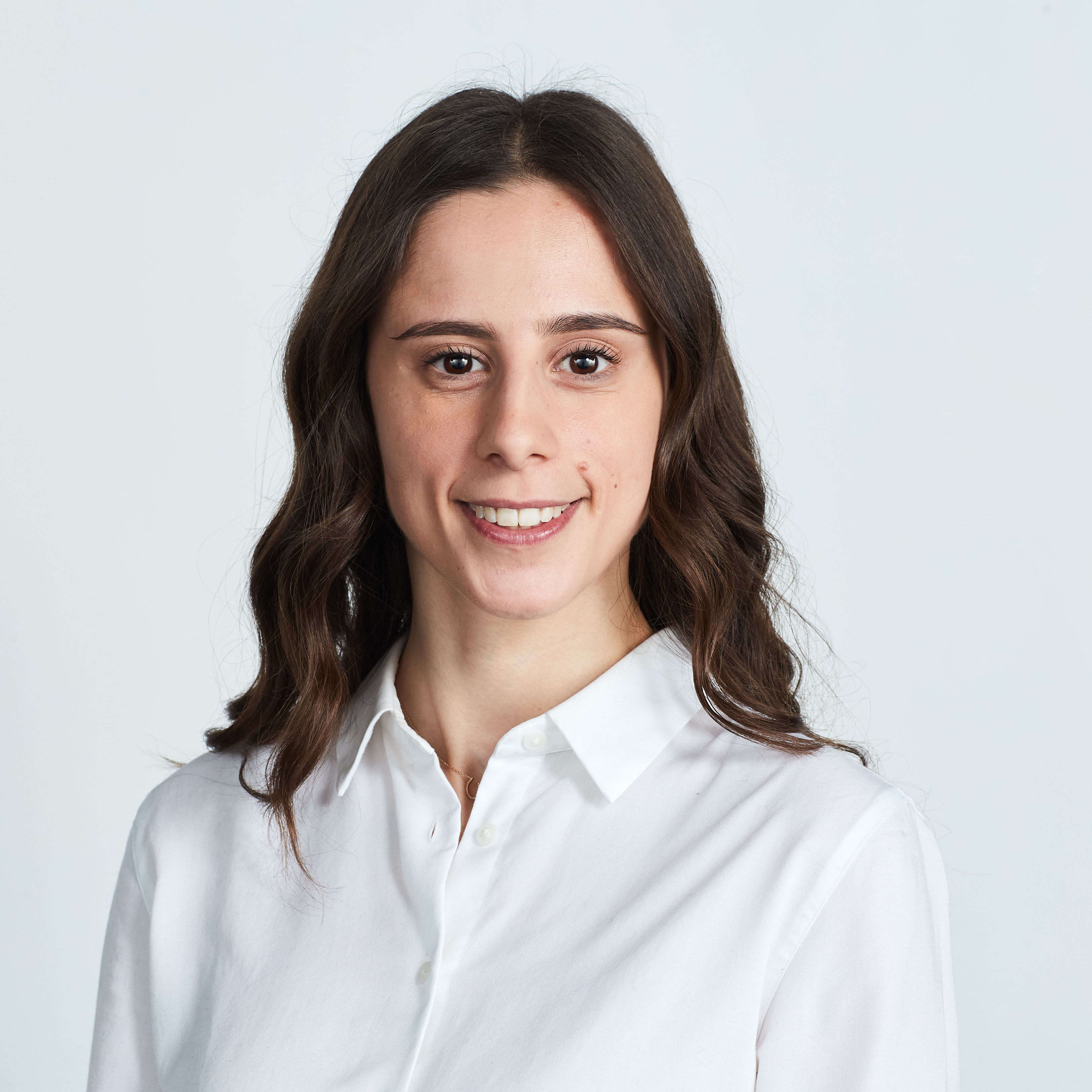
Bianca Briscas
Bianca Briscas is a PhD Candidate in the School of Biotechnology and Biomolecular Sciences, Faculty of Science at UNSW Sydney. She completed a Bachelor of Medical Science (Distinction) in 2020, and received First Class Honours in 2021. Her PhD research centres on the human microbiome, with a focus on exploring the complex interactions between bacteria and fungi, to inform novel approaches to managing infections caused by Candida albicans, an opportunistic fungal pathogen of humans.

